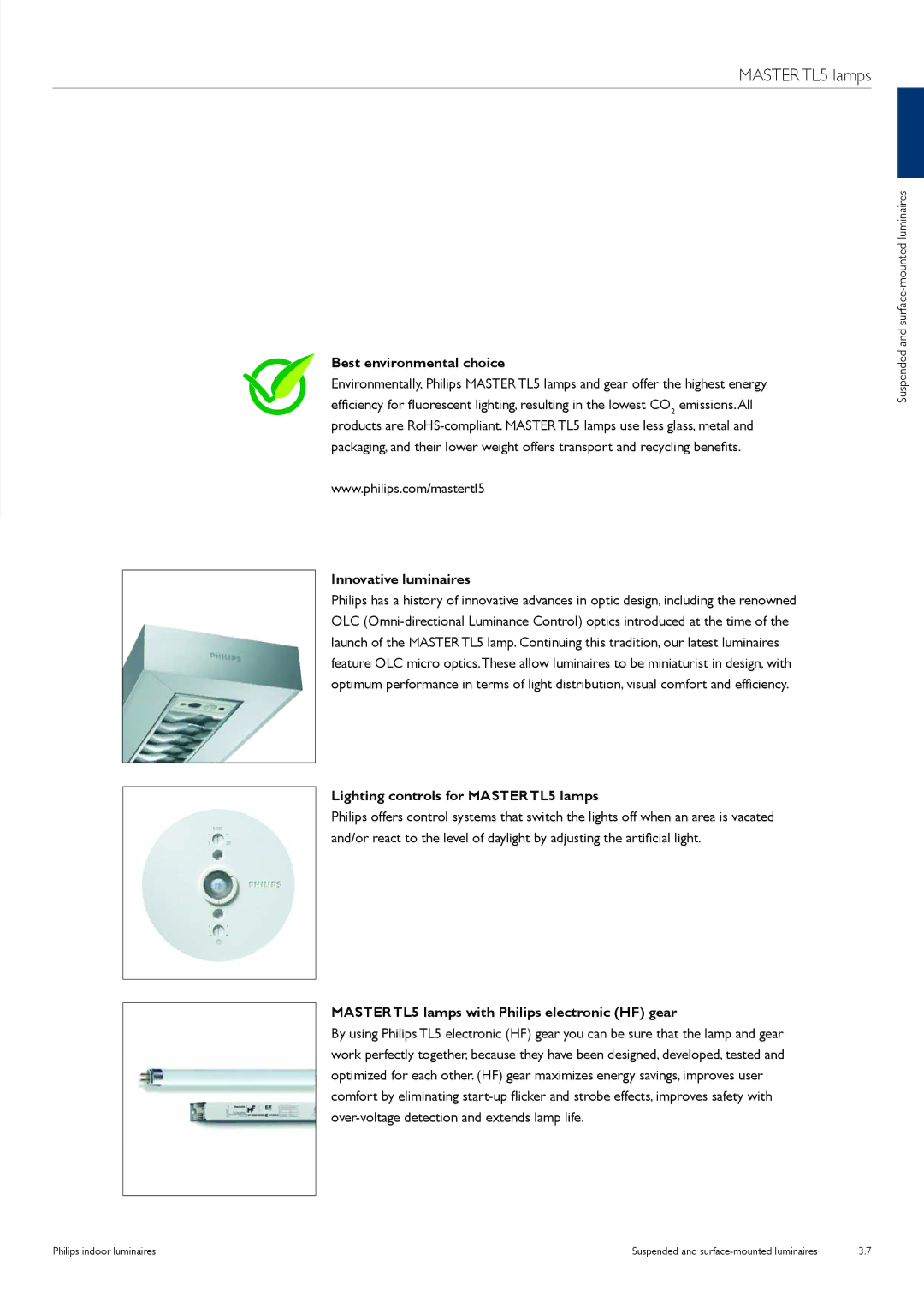TCS125 specifications
The Philips TCS125 is a state-of-the-art LED street lighting solution designed to enhance urban spaces while promoting energy efficiency and sustainability. With its innovative technology and superior performance, the TCS125 stands out in the market as a reliable choice for municipalities looking to upgrade their lighting infrastructure.One of the main features of the Philips TCS125 is its advanced LED technology. This lighting solution utilizes high-quality LEDs that provide exceptional brightness and uniform illumination, ensuring that streets are well-lit, safe, and inviting. The light output can be tailored according to specific requirements, allowing cities to customize lighting levels based on the area’s needs, optimizing both visibility and energy consumption.
Efficiency is a core characteristic of the TCS125. With energy savings of up to 50% compared to traditional street lighting solutions, it significantly reduces operational costs for municipalities. The long lifespan of the LEDs, typically lasting over 50,000 hours, further minimizes maintenance costs and the need for frequent replacements. This durability ensures that cities can invest in lighting that is not only cost-effective but also long-lasting and environmentally friendly.
Another key advantage of the TCS125 is its intelligent control capabilities. It can support various smart city initiatives, integrating seamlessly with IoT (Internet of Things) systems. This connectivity allows for remote monitoring, management, and dimming features, enhancing the adaptability of the lighting system. Cities can track energy consumption and receive alerts for maintenance needs, thereby optimizing operations and extending the longevity of the installation.
The TCS125 also emphasizes versatility in design. Its sleek and modern aesthetic enables it to blend seamlessly into diverse urban environments, whether in residential areas, commercial districts, or along thoroughfares. The variety of mounting options allows for easy installation on existing infrastructure, making it a practical upgrade for cities looking to modernize their lighting without significant construction.
In summary, the Philips TCS125 is an innovative lighting solution that combines advanced LED technology, energy efficiency, and intelligent control features, making it ideal for modern urban environments. Its extended lifespan, customizable performance, and sleek design position it as a leader in the transformation of public spaces into safer, smarter, and more sustainable areas.

